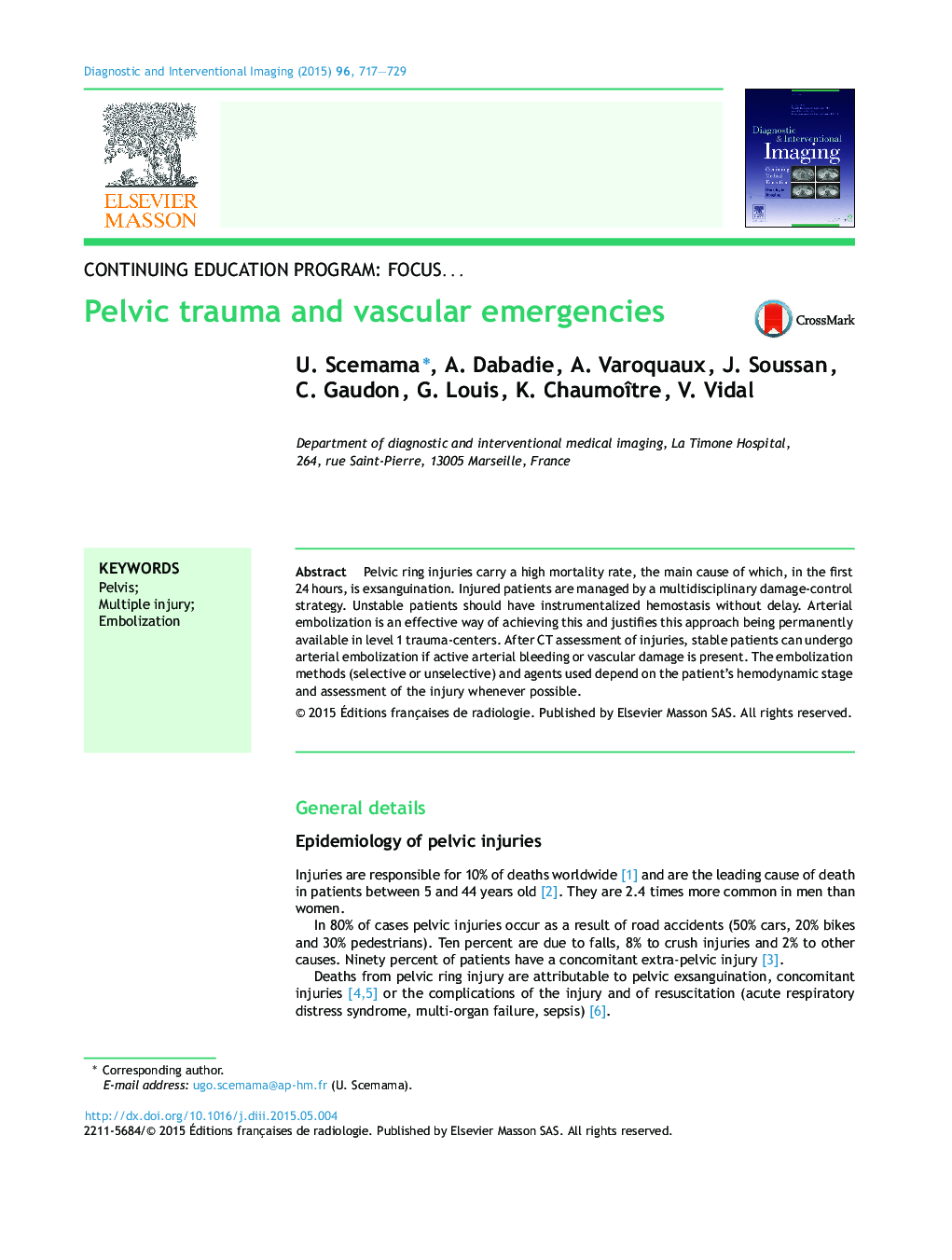| Article ID | Journal | Published Year | Pages | File Type |
|---|---|---|---|---|
| 2733682 | Diagnostic and Interventional Imaging | 2015 | 13 Pages |
Abstract
Pelvic ring injuries carry a high mortality rate, the main cause of which, in the first 24 hours, is exsanguination. Injured patients are managed by a multidisciplinary damage-control strategy. Unstable patients should have instrumentalized hemostasis without delay. Arterial embolization is an effective way of achieving this and justifies this approach being permanently available in level 1 trauma-centers. After CT assessment of injuries, stable patients can undergo arterial embolization if active arterial bleeding or vascular damage is present. The embolization methods (selective or unselective) and agents used depend on the patient's hemodynamic stage and assessment of the injury whenever possible.
Keywords
Related Topics
Health Sciences
Medicine and Dentistry
Health Informatics
Authors
U. Scemama, A. Dabadie, A. Varoquaux, J. Soussan, C. Gaudon, G. Louis, K. Chaumoître, V. Vidal,
